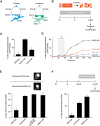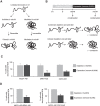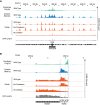The spatial regulation of condensin activity in chromosome condensation
- PMID: 32354834
- PMCID: PMC7263143
- DOI: 10.1101/gad.335471.119
The spatial regulation of condensin activity in chromosome condensation
Abstract
Condensin mediates chromosome condensation, which is essential for proper chromosome segregation during mitosis. Prior to anaphase of budding yeast, the ribosomal DNA (RDN) condenses to a thin loop that is distinct from the rest of the chromosomes. We provide evidence that the establishment and maintenance of this RDN condensation requires the regulation of condensin by Cdc5p (polo) kinase. We show that Cdc5p is recruited to the site of condensin binding in the RDN by cohesin, a complex related to condensin. Cdc5p and cohesin prevent condensin from misfolding the RDN into an irreversibly decondensed state. From these and other observations, we propose that the spatial regulation of Cdc5p by cohesin modulates condensin activity to ensure proper RDN folding into a thin loop. This mechanism may be evolutionarily conserved, promoting the thinly condensed constrictions that occur at centromeres and RDN of mitotic chromosomes in plants and animals.
Keywords: cohesin; cohesion; condensation; condensin; polo kinase.
© 2020 Lamothe et al.; Published by Cold Spring Harbor Laboratory Press.
Figures





References
Publication types
MeSH terms
Substances
Grants and funding
LinkOut - more resources
Full Text Sources
Molecular Biology Databases
